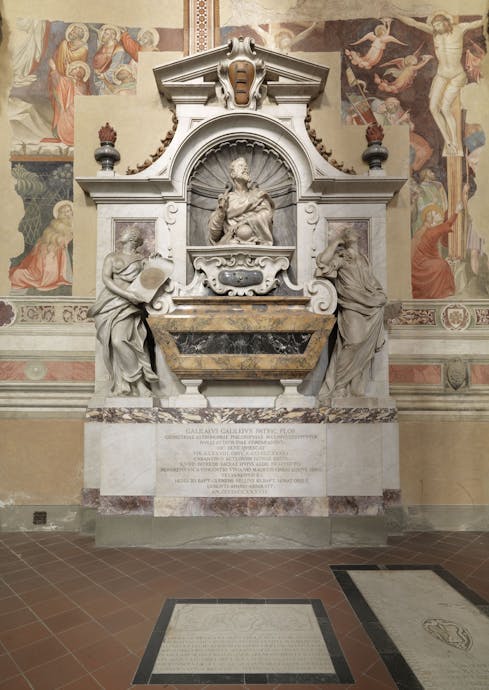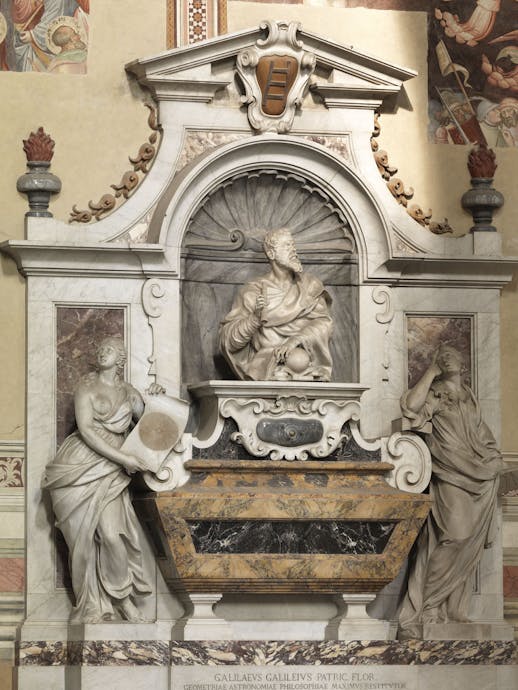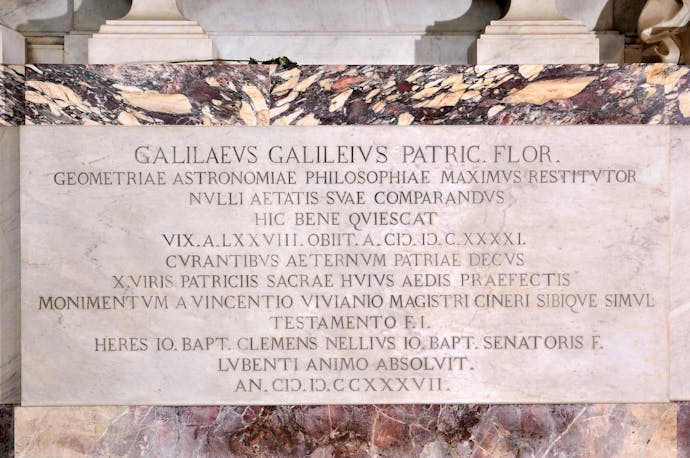Giovanni Battista Foggini (design)
Artist: Giovanni Battista Foggini (Florence 1652–1725): design, bust of Galileo; Giulio Foggini (recorded from 1729 to 1741): design; Vincenzo Foggini (Florence c. 1701–55): Astronomy; Girolamo Ticciati (Florence 1676–1744): Geometry
Title: Monumental tomb of Galileo Galilei (1564-1642)
Date: 1737
Material and technique: white and polychrome marble, pietra serena stone, polychrome stucco
Dimensions: 700 x 460 x 75 cm
Position: Basilica of Santa Croce, north aisle, between the first and second bays
The body of Galileo, who had the family tomb in Santa Croce, was buried, almost secretly, in a small room near the Novitiate chapel on his death in 1642.
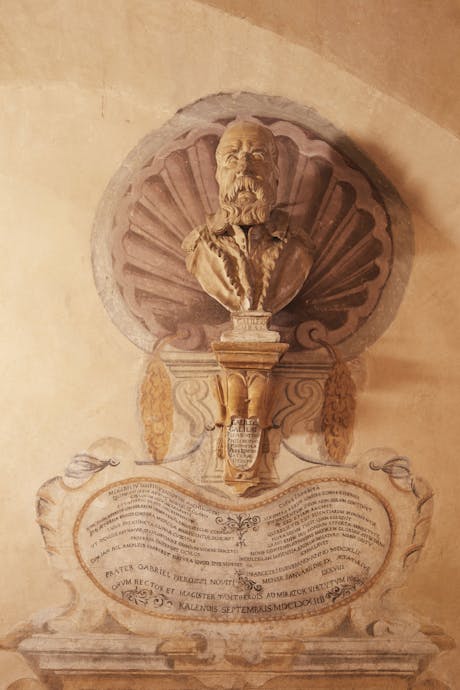
Plaque commemorating Galileo's first burial place, 1674 and 1737. Basilica of Santa Croce, Medici Chapel
The idea of a monument to Galileo, eagerly promoted by his loyal pupil Vincenzo Viviani, instantly aroused strong opposition in clerical circles. They felt it inappropriate to celebrate the memory of a man suspected of heresy. Almost a century was to go by before a funerary monument celebrating the great scientist was erected in the basilica's north aisle opposite the tomb of Michelangelo. The situation was only resolved thanks to the intervention of Grand Duke Gian Gastone de' Medici (1671–1737) and to his policy based on modernising the state to curb the power of the Church.
The sarcophagus, with two statues on either side, sits on a tall, three-part plinth. On the left Astronomy holds a parchment with sunspots carved by Vincenzo Foggini, while on the right Geometry displays a plank on an incline demonstrating the equation of falling bodies by Girolamo Ticciati. Above the tomb, a niche modelled to resemble a shell contains a bust of Galileo by Giovan Battista Foggini, who also designed the monument as a whole, and is topped by the family crest.
Galileo is shown gazing at the heavens while clutching a telescope in his right hand, while his left hand rests on a celestial globe set on a pile of books and a compass. In the centre of the scroll we see the planet Jupiter with its moons, which Galileo discovered and christened the "Medici planets". Below, a lenghty inscription composed by Simone di Bindo Peruzzi celebrates the great man.
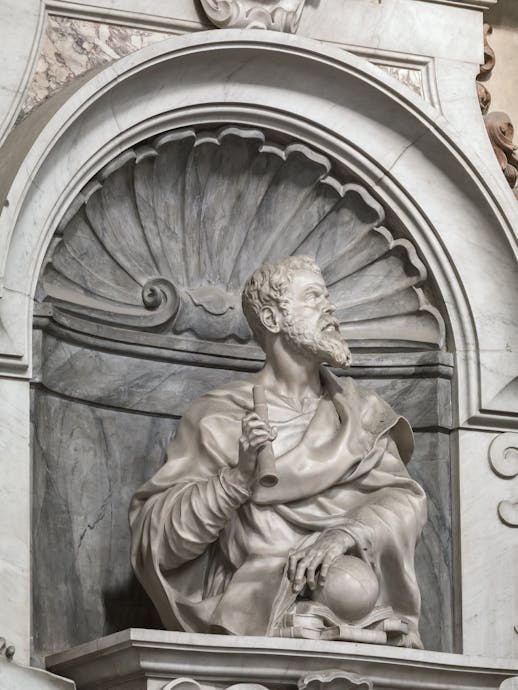
Giovanni Battista Foggini, Bust of Galileo, detail of the monumental tomb of Galileo Galilei, 1737. Basilica of Santa Croce, north aisle
The austerity of this monument, with its troubled gestation, shows specific formal analogies with the funerary sculpture of Bernini and Algardi in Rome, but at the same time it interacts with the tomb of Michelangelo facing it from across the nave.
